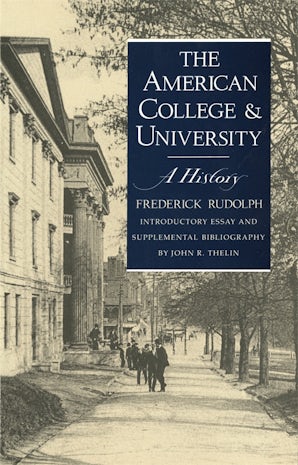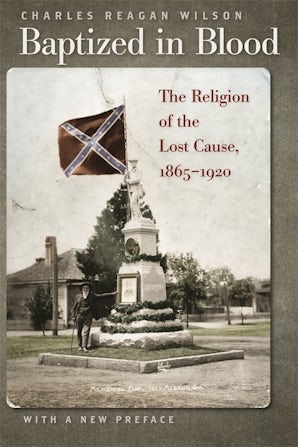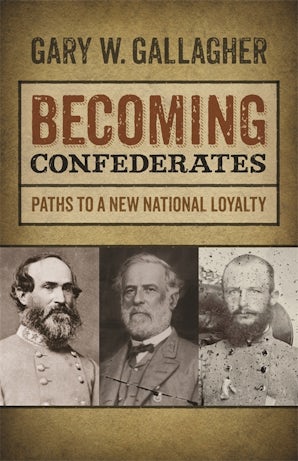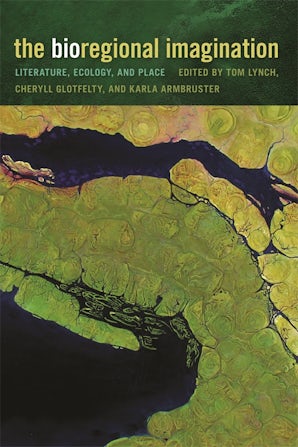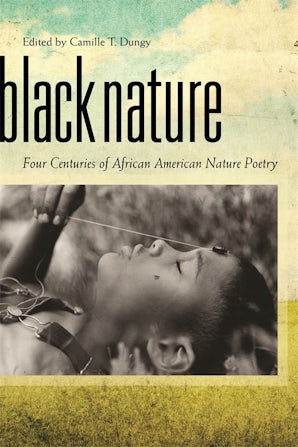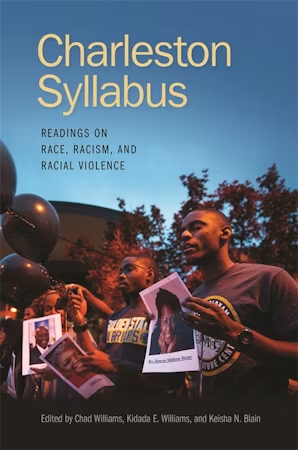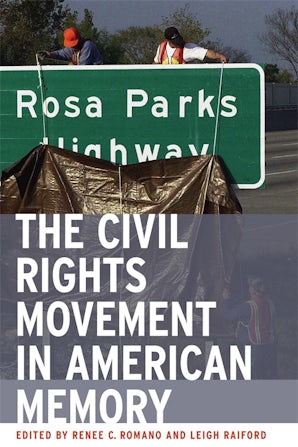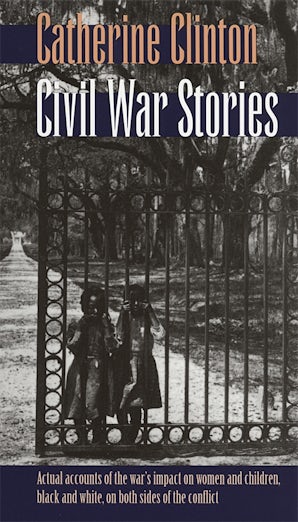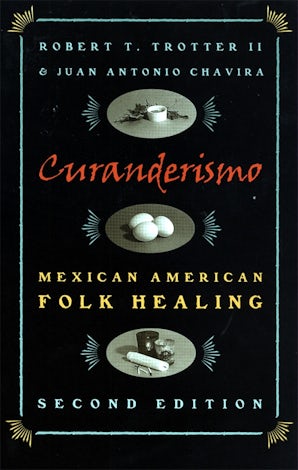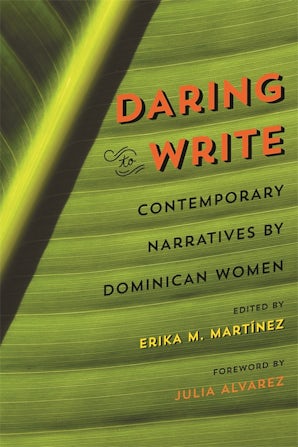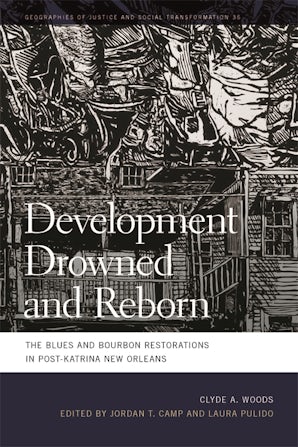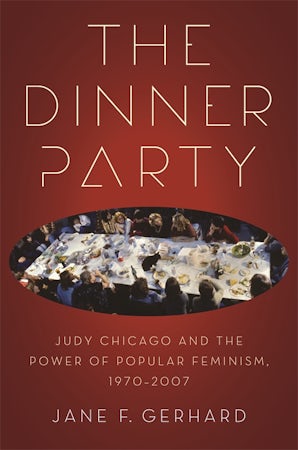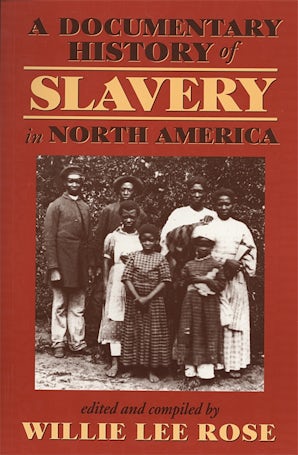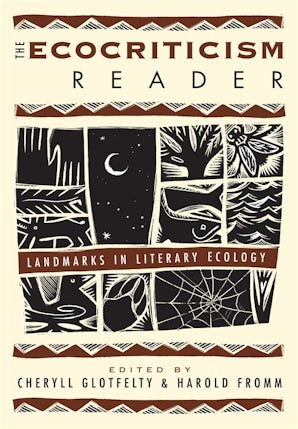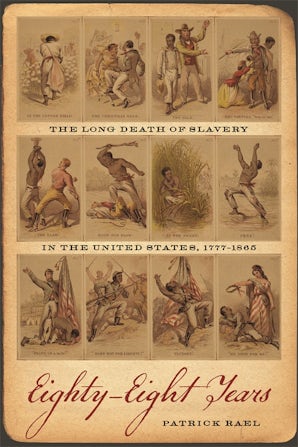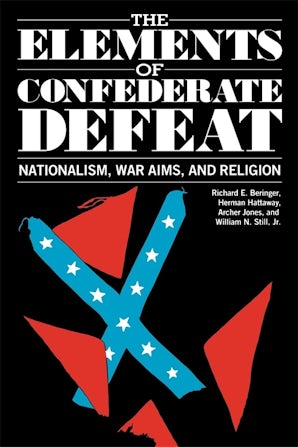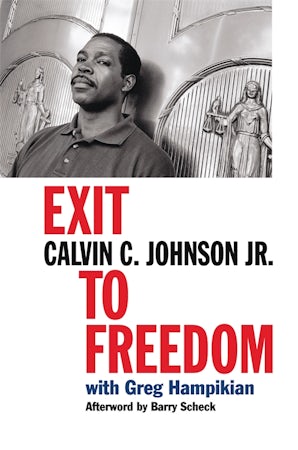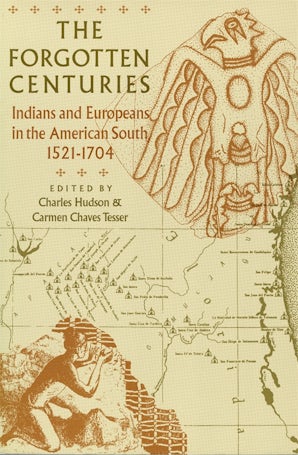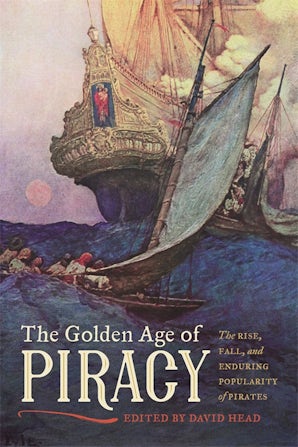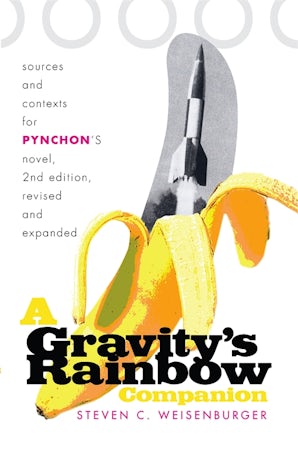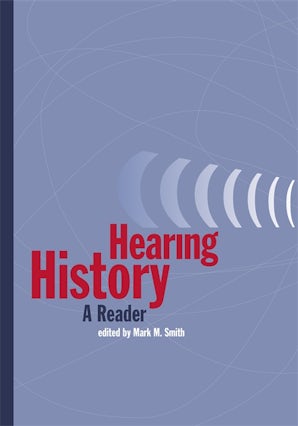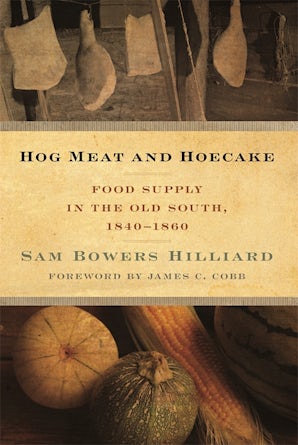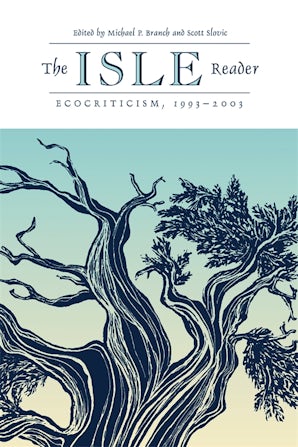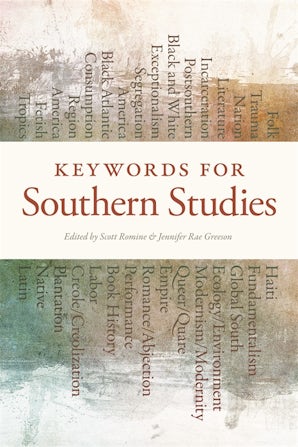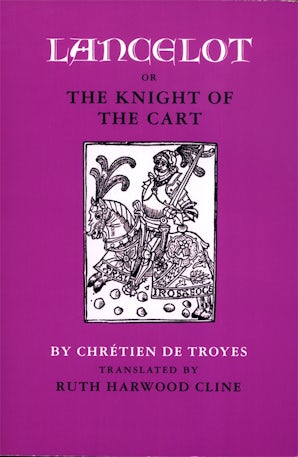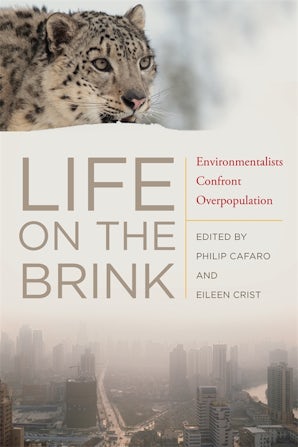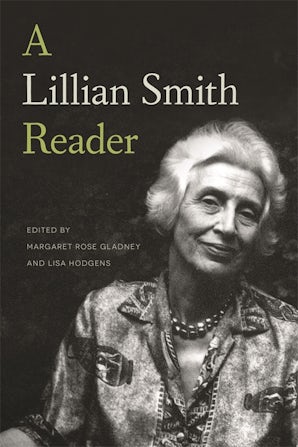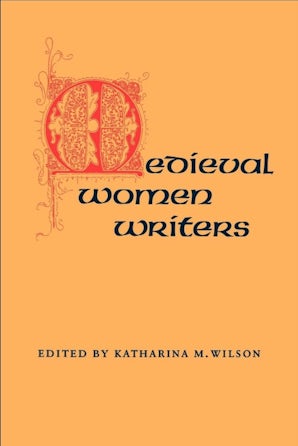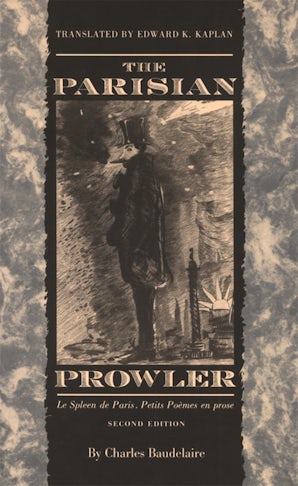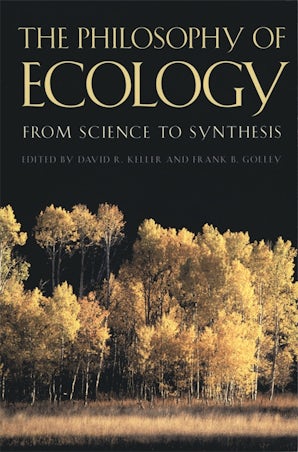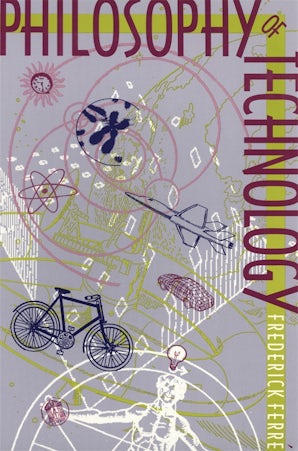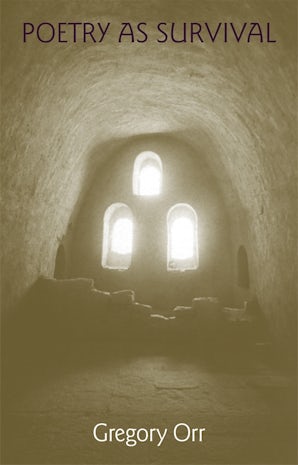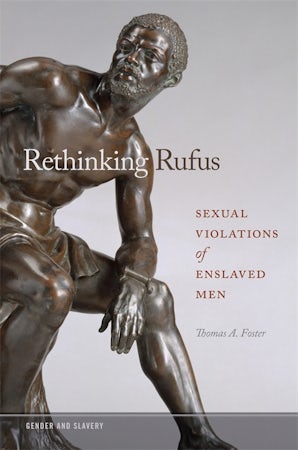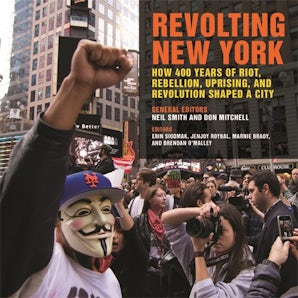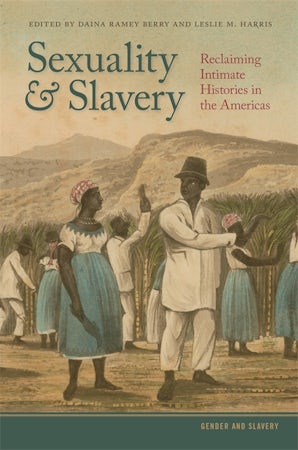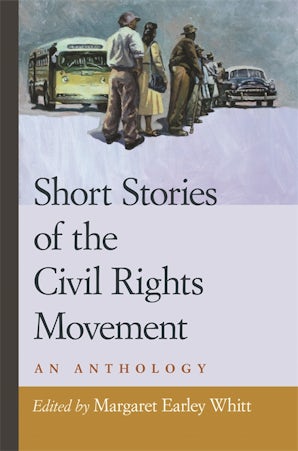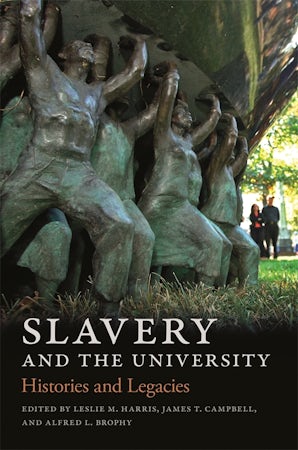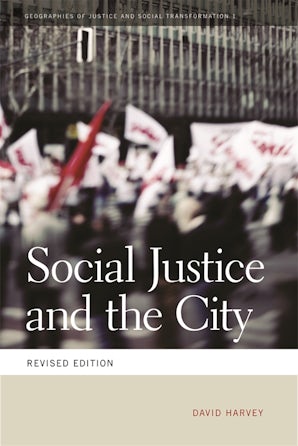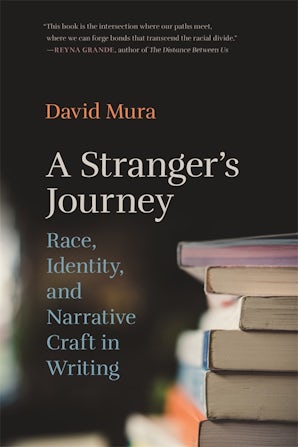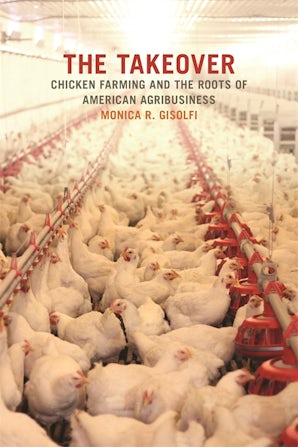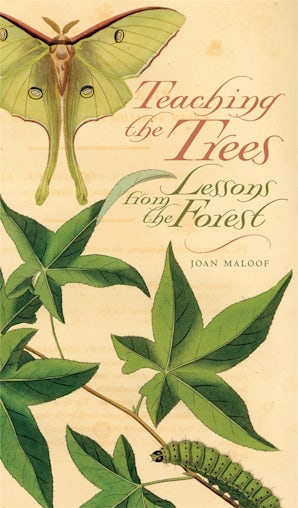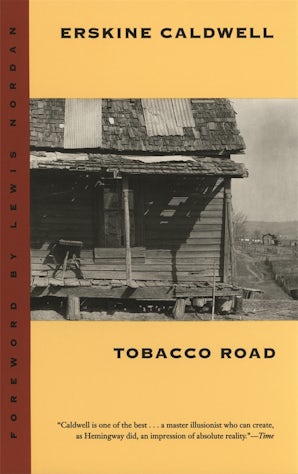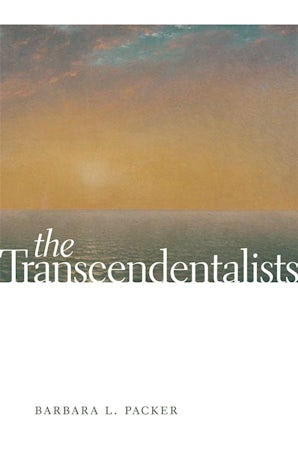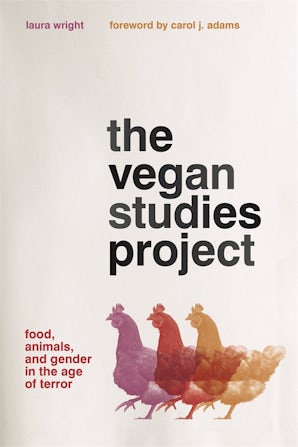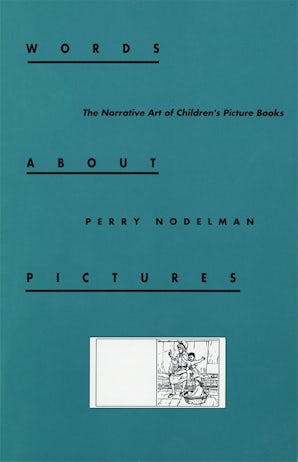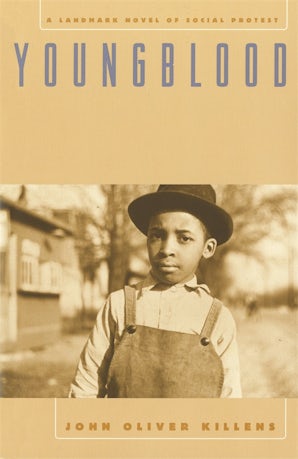List with all elements:
Contemporary Essayists Cover the Essays
$25.95
Paperback
University of Georgia Press
University of Georgia Press
2017-02-15
2017-02-15
Writers of the modern essay can trace their chosen genre all the way back to Michel de Montaigne (1533–92). But save for the recent notable best seller How to Live: A Life of Montaigne by Sarah Bakewell, Montaigne is largely ignored. After Montaigne—a collection of twenty-four new personal essays intended as tribute—aims to correct this collective lapse of memory and introduce modern readers and writers to their stylistic forebear.
Though it’s been over four hundred years since he began writing his essays, Montaigne’s writing is still fresh, and his use of the form as a means of self-exploration in the world around him reads as innovative—even by modern standards. He is, simply put, the writer to whom all essayists are indebted. Each contributor has chosen one of Montaigne’s 107 essays and has written his/her own essay of the same title and on the same theme, using a quote from Montaigne’s essay as an epigraph. The overall effect is akin to a covers album, with each writer offering his or her own interpretation and stylistic verve to Montaigne’s themes in ways that both reinforce and challenge the French writer’s prose, ideas, and forms. Featuring a who’s who of contemporary essayists, After Montaigne offers astartling engagement with Montaigne and the essay form while also pointing the way to the genre’s potential new directions.
9780820351377
272 Pages
The American College and University
A History
$37.95
Paperback
University of Georgia Press
University of Georgia Press
1991-02-01
1991-02-01
First published in 1962, Frederick Rudolph's groundbreaking study, The American College and University, remains one of the most useful and significant works on the history of higher education in America. Bridging the chasm between educational and social history, this book was one of the first to examine developments in higher education in the context of the social, economic, and political forces that were shaping the nation at large.
Surveying higher education from the colonial era through the mid-twentieth century, Rudolph explores a multitude of issues from the financing of institutions and the development of curriculum to the education of women and blacks, the rise of college athletics, and the complexities of student life. In his foreword to this new edition, John Thelin assesses the impact that Rudolph's work has had on higher education studies. The new edition also includes a bibliographic essay by Thelin covering significant works in the field that have appeared since the publication of the first edition.
At a time when our educational system as a whole is under intense scrutiny, Rudolph's seminal work offers an important historical perspective on the development of higher education in the United States.
9780820312842
616 Pages
$23.95
Paperback
University of Georgia Press
University of Georgia Press
1998-09-01
1998-09-01
9780820320410
160 Pages
The Religion of the Lost Cause, 1865-1920
$30.95
Paperback
University of Georgia Press
University of Georgia Press
2009-10-01
2009-10-01
9780820334257
264 Pages
Paths to a New National Loyalty
$36.95
Paperback
University of Georgia Press
University of Georgia Press
2013-05-01
2013-05-01
In Becoming Confederates, Gary W. Gallagher explores loyalty in the era of the Civil War, focusing on Robert E. Lee, Stephen Dodson Ramseur, and Jubal A. Early—three prominent officers in the Army of Northern Virginia who became ardent Confederate nationalists. Loyalty was tested and proved in many ways leading up to and during the war. Looking at levels of allegiance to their native state, to the slaveholding South, to the United States, and to the Confederacy, Gallagher shows how these men represent responses to the mid-nineteenth-century crisis.
Lee traditionally has been presented as a reluctant convert to the Confederacy whose most powerful identification was with his home state of Virginia—an interpretation at odds with his far more complex range of loyalties. Ramseur, the youngest of the three, eagerly embraced a Confederate identity, highlighting generational differences in the equation of loyalty. Early combined elements of Lee's and Ramseur's reactions—a Unionist who grudgingly accepted Virginia's departure from the United States but later came to personify defiant Confederate nationalism.
The paths of these men toward Confederate loyalty help delineate important contours of American history. Gallagher shows that Americans juggled multiple, often conflicting, loyalties and that white southern identity was preoccupied with racial control transcending politics and class. Indeed, understanding these men's perspectives makes it difficult to argue that the Confederacy should not be deemed a nation. Perhaps most important, their experiences help us understand why Confederates waged a prodigiously bloody war and the manner in which they dealt with defeat.
9780820345406
152 Pages
Literature, Ecology, and Place
$36.95
Paperback
University of Georgia Press
University of Georgia Press
2012-03-01
2012-03-01
Bioregionalism is an innovative way of thinking about place and planet from an ecological perspective. Although bioregional ideas occur regularly in ecocritical writing, until now no systematic effort has been made to outline the principles of bioregional literary criticism and to use it as a way to read, write, understand, and teach literature.
The twenty-four original essays here are written by an outstanding selection of international scholars. The range of bioregions covered is global and includes such diverse places as British Columbia’s Meldrum Creek and Italy’s Po River Valley, the Arctic and the Outback. There are even forays into cyberspace and outer space. In their comprehensive introduction, the editors map the terrain of the bioregional movement, including its history and potential to inspire and invigorate place-based and environmental literary criticism.
Responding to bioregional tenets, this volume is divided into four sections. The essays in the “Reinhabiting” section narrate experiments in living-in-place and restoring damaged environments. The “Rereading” essays practice bioregional literary criticism, both by examining texts with strong ties to bioregional paradigms and by opening other, less-obvious texts to bioregional analysis. In “Reimagining,” the essays push bioregionalism to evolve—by expanding its corpus of texts, coupling its perspectives with other approaches, or challenging its core constructs. Essays in the “Renewal” section address bioregional pedagogy, beginning with local habitat studies and concluding with musings about the Internet.
In response to the environmental crisis, we must reimagine our relationship to the places we inhabit. This volume shows how literature and literary studies are fundamental tools to such a reimagining.
9780820335926
440 Pages
Four Centuries of African American Nature Poetry
$36.95
Paperback
Friends Fund
University of Georgia Press
2009-12-01
2009-12-01
Black Nature is the first anthology to focus on nature writing by African American poets, a genre that until now has not commonly been counted as one in which African American poets have participated.
Black poets have a long tradition of incorporating treatments of the natural world into their work, but it is often read as political, historical, or protest poetry—anything but nature poetry. This is particularly true when the definition of what constitutes nature writing is limited to work about the pastoral or the wild.
Camille T. Dungy has selected 180 poems from 93 poets that provide unique perspectives on American social and literary history to broaden our concept of nature poetry and African American poetics. This collection features major writers such as Phillis Wheatley, Rita Dove, Yusef Komunyakaa, Gwendolyn Brooks, Sterling Brown, Robert Hayden, Wanda Coleman, Natasha Trethewey, and Melvin B. Tolson as well as newer talents such as Douglas Kearney, Major Jackson, and Janice Harrington. Included are poets writing out of slavery, Reconstruction, the Harlem Renaissance, the Black Arts Movement, and late twentieth- and early twenty-first-century African American poetic movements.
Black Nature brings to the fore a neglected and vital means of considering poetry by African Americans and nature-related poetry as a whole.
A Friends Fund Publication.
9780820334318
432 Pages
Readings on Race, Racism, and Racial Violence
$34.95
Paperback
Sarah Mills Hodge Fund
University of Georgia Press
2016-05-15
On June 17, 2015, a white supremacist entered Emanuel AME Church in Charleston, South Carolina, and sat with some of its parishioners during a Wednesday night Bible study session. An hour later, he began expressing his hatred for African Americans, and soon after, he shot nine church members dead, the church’s pastor and a South Carolina state senator, Rev. Clementa C. Pinckney, among them. The ensuing manhunt for the shooter and investigation of his motives revealed his beliefs in white supremacy and reopened debates about racial conflict, southern identity, systemic racism, civil rights, and the African American church as an institution.
In the aftermath of the massacre, Professors Chad Williams, Kidada E. Williams, and Keisha N. Blain sought a way to put the murder—and the subsequent debates in the media—in the context of America’s tumultuous history of race relations and racial violence on a global scale. They created the Charleston Syllabus on June 19, starting it as a hashtag on Twitter linking to scholarly works on the myriad of issues related to the murder. The syllabus’s popularity exploded and is already being used as a key resource in discussions of the event.
Charleston Syllabus is a reader—a collection of new essays and columns published in the wake of the massacre, along with selected excerpts from key existing scholarly books and general-interest articles. The collection draws from a variety of disciplines—history, sociology, urban studies, law, critical race theory—and includes discussion questions and a selected and annotated bibliography for further reading, drawing from such texts as the confederate constitution, South Carolina's secession declaration, songs, poetry, slave narratives, and literacy texts. As timely as it is necessary, the book will be a valuable resource for understanding the roots of American systemic racism, white privilege, the uses and abuses of the Confederate flag and its ideals, the black church as a foundation for civil rights activity and state violence against such activity, and critical whiteness studies.
This book is dedicated to
Cynthia Hurd
Susie Jackson
Ethel Lance
DePayne Middleton-Doctor
Clementa Pinckney
Tywanza Sanders
Daniel Simmons Sr.
Sharonda Singleton
Myra Thompson
9780820349572
368 Pages
The Civil Rights Movement in American Memory
$36.95
Paperback
University of Georgia Press
University of Georgia Press
2006-05-01
2006-05-01
The movement for civil rights in America peaked in the 1950s and 1960s; however, a closely related struggle, this time over the movement's legacy, has been heatedly engaged over the past two decades. How the civil rights movement is currently being remembered in American politics and culture—and why it matters—is the common theme of the thirteen essays in this unprecedented collection.
Memories of the movement are being created and maintained—in ways and for purposes we sometimes only vaguely perceive—through memorials, art exhibits, community celebrations, and even street names. At least fifteen civil rights movement museums have opened since 1990; Mississippi Burning, Four Little Girls, and The Long Walk Home only begin to suggest the range of film and television dramatizations of pivotal events; corporations increasingly employ movement images to sell fast food, telephones, and more; and groups from Christian conservatives to gay rights activists have claimed the civil rights mantle.
Contests over the movement's meaning are a crucial part of the continuing fight against racism and inequality. These writings look at how civil rights memories become established as fact through museum exhibits, street naming, and courtroom decisions; how our visual culture transmits the memory of the movement; how certain aspects of the movement have come to be ignored in its "official" narrative; and how other political struggles have appropriated the memory of the movement. Here is a book for anyone interested in how we collectively recall, claim, understand, and represent the past.
9780820328140
408 Pages
American Literature from Jim Crow to Reconciliation
$34.95
Paperback
William Winter Institute for Racial Reconciliation
University of Georgia Press
2009-01-15
2009-01-15
This anthology of drama, essays, fiction, and poetry presents a thoughtful, classroom-tested selection of the best literature for learning about the long civil rights movement. Unique in its focus on creative writing, the volume also ranges beyond a familiar 1954-68 chronology to include works from the 1890s to the present. The civil rights movement was a complex, ongoing process of defining national values such as freedom, justice, and equality. In ways that historical documents cannot, these collected writings show how Americans negotiated this process—politically, philosophically, emotionally, spiritually, and creatively.
Gathered here are works by some of the most influential writers to engage issues of race and social justice in America, including James Baldwin, Flannery O'Connor, Amiri Baraka, and Nikki Giovanni. The volume begins with works from the post-Reconstruction period when racial segregation became legally sanctioned and institutionalized. This section, titled "The Rise of Jim Crow," spans the period from Frances E. W. Harper's Iola Leroy to Ralph Ellison's Invisible Man. In the second section, "The Fall of Jim Crow," Martin Luther King Jr.'s "Letter from Birmingham Jail" and a chapter from The Autobiography of Malcolm X appear alongside poems by Robert Hayden, June Jordan, and others who responded to these key figures and to the events of the time. "Reflections and Continuing Struggles," the last section, includes works by such current authors as Rita Dove, Anthony Grooms, and Patricia J. Williams. These diverse perspectives on the struggle for civil rights can promote the kinds of conversations that we, as a nation, still need to initiate.
9780820332253
392 Pages
$22.95
Paperback
University of Georgia Press
University of Georgia Press
1998-09-01
1998-09-01
Civil War Stories is Catherine Clinton's fresh look at some everyday and extraordinary people whose lives were forever transformed by the impact of war. Her multifaceted perspective includes the stories of sisters, children, and friends torn apart by the crisis of Confederate independence, as well as those to whom silence was a way to "keep the peace," although true peace would never again be restored.
Two sisters, one a staunch defender of the Union, the other a passionate advocate of the rebel cause, are traumatized by the divide the Civil War imposes. Thousands of orphans, scattered from Maine to New Orleans, learn the hard lessons of the war at an early age. Clinton urges us to reconsider this fatherless generation's devastating losses. The war's outcome was acrimoniously contested after Appomattox. The story of two South Carolina women, one black and one white, illuminates that fires of bitterness raged even after surrender.
Clinton suggests those on opposing sides sought to vindicate their losses and assert their rights by taking up the pen. The histories and memoirs she contrasts, the lives she reconstructs, and the stories she highlights provide appreciation of the cultural impact of the American Civil War, for those who endured it and for those of us who continue to be fascinated by its legacy.
9780820320748
144 Pages
$30.95
Paperback
University of Georgia Press
University of Georgia Press
2000-02-03
2000-02-03
In this verse translation of Cligès, written by Chrétien de Troyes circa 1176, Ruth Harwood Cline not only preserves the artistry of the original work but also captures the wit, irony, and striking emotional power of Chrétien's stylistic genius and highly structured form.
The romance begins with the marriage of Cligès's parents and continues with the clandestine, mutual love of their son and his uncle's bride, Fenice. Cligès and Fenice are finally united after executing a false-death plot aided by black magic.
With a thoroughness and clarity that will appeal to students and scholars of medieval literature, Cline's accessible translation effectively conveys the sparkle, pace, and intricate wordplay of Chrétien's love monologues, classic themes, and complex poetic devices. In addition, her introduction sheds new light on the transmission of British history and legend to the French court of Champagne. With themes that echo from the Tristan legend to Romeo and Juliet, Cligès is an exciting romance about young lovers who escape from an arranged match and find true love in marriage.
9780820321424
248 Pages
A Companion to The Crying of Lot 49
$34.95
Paperback
University of Georgia Press
University of Georgia Press
2008-11-15
2008-11-15
The Crying of Lot 49 is Thomas Pynchon's most accessible work and perhaps the one most widely read and taught. Nonetheless, the novel poses many challenges with its impressive range of references to contemporary popular and material culture, history and geography, and slang and technical jargon.
This expanded and updated companion to the novel contains more than five hundred notes keyed to the 2006 Harper Perennial Modern Classics, the 1986 Harper Perennial Library, and the 1967 Bantam editions. The majority of notes are interpretive, although some are designed to provide a historical context or to recover the meaning of a reference that, over time, has proved ephemeral. This new edition adds quotations and paraphrases drawn from criticism published since 1994, thus adding more than seventy new entries to the list of works cited. More than fifty annotations have been added and some eighty annotations have been expanded.
9780820332086
208 Pages
Confederate Statues and Memorialization
$20.95
Paperback
Bradley Hale Fund for Southern Studies
University of Georgia Press
2019-04-01
2019-04-01
Nine killed in Charleston church shooting. White supremacists demonstrate in Charlottesville. Monuments decommissioned in New Orleans and Chapel Hill. The headlines keep coming, and the debate rolls on. How should we contend with our troubled history as a nation? What is the best way forward?
This first book in UGA Press’s History in the Headlines series offers a rich discussion between four leading scholars who have studied the history of Confederate memory and memorialization. Through this dialogue, we see how historians explore contentious topics and provide historical context for students and the broader public. Confederate Statues and Memorialization artfully engages the past and its influence on present racial and social tensions in an accessible format for students and interested general readers.
Following the conversation, the book includes a “Top Ten” set of essays and articles that everyone should read to flesh out their understanding of this contentious, sometimes violent topic. The book closes with an extended list of recommended reading, offering readers specific suggestions for pursuing other voices and points of view.
9780820355573
192 Pages
Mexican American Folk Healing
$26.95
Paperback
University of Georgia Press
University of Georgia Press
1997-11-01
1997-11-01
The practice of curanderismo, or Mexican American folk medicine, is part of a historically and culturally important health care system deeply rooted in native Mexican healing techniques. This is the first book to describe the practice from an insider's point of view, based on the authors' three-year apprenticeships with curanderos (healers).
Robert T. Trotter and Juan Antonio Chavira present an intimate view of not only how curanderismo is practiced but also how it is learned and passed on as a healing tradition. By providing a better understanding of why curanderos continue to be in demand despite the lifesaving capabilities of modern medicine, this text will serve as an indispensable resource to health professionals who work within Mexican American communities, to students of transcultural medicine, and to urban ethnologists and medical anthropologists.
9780820319629
232 Pages
Contemporary Narratives by Dominican Women
$27.95
Paperback
University of Georgia Press
University of Georgia Press
2016-04-15
With this new Latino literary collection Erika M. Martínez has brought together twenty-four engaging narratives written by Dominican women and women of Dominican descent living in the United States. The first volume of its kind, Daring to Write’s insightful works offer readers a wide array of content that touches on a range of topics: migration, history, religion, race, class, gender, and sexuality. The result is a moving and imaginative critique of how these factors intersect and affect daily lives.
The volume opens with a foreword by Julia Alvarez and includes short stories, novel excerpts, memoirs, and personal essays and features work by established writers such as Angie Cruz and Nelly Rosario, alongside works by emerging writers. Narratives originally written in Spanish appear in English for the first time, translated by Achy Obejas. An important contribution to Latino/a studies, these writings will introduce readers to a new collection of rich literature.
9780820349268
234 Pages
Development Drowned and Reborn
The Blues and Bourbon Restorations in Post-Katrina New Orleans
$36.95
Paperback
University of Georgia Press
University of Georgia Press
2017-07-01
2017-07-01
Development Drowned and Reborn is a “Blues geography” of New Orleans, one that compels readers to return to the history of the Black freedom struggle there to reckon with its unfinished business. Reading contemporary policies of abandonment against the grain, Clyde Woods explores how Hurricane Katrina brought long-standing structures of domination into view. In so doing, Woods delineates the roots of neoliberalism in the region and a history of resistance.
Written in dialogue with social movements, this book offers tools for comprehending the racist dynamics of U.S. culture and economy. Following his landmark study, Development Arrested, Woods turns to organic intellectuals, Blues musicians, and poor and working people to instruct readers in this future-oriented history of struggle. Through this unique optic, Woods delineates a history, methodology, and epistemology to grasp alternative visions of development.
Woods contributes to debates about the history and geography of neoliberalism. The book suggests that the prevailing focus on neoliberalism at national and global scales has led to a neglect of the regional scale. Specifically, it observes that theories of neoliberalism have tended to overlook New Orleans as an epicenter where racial, class, gender, and regional hierarchies have persisted for centuries. Through this Blues geography, Woods excavates the struggle for a new society.
9780820350929
396 Pages
Judy Chicago and the Power of Popular Feminism, 1970-2007
$29.95
Paperback
University of Georgia Press
University of Georgia Press
2013-06-01
2013-06-01
Judy Chicago's monumental art installation The Dinner Party was an immediate sensation when it debuted in 1979, and today it is considered the most popular work of art to emerge from the second-wave feminist movement. Jane F. Gerhard examines the piece's popularity to understand how ideas about feminism migrated from activist and intellectual circles into the American mainstream in the last three decades of the twentieth century.
More than most social movements, feminism was transmitted and understood through culture—art installations, Ms. Magazine, All in the Family, and thousands of other cultural artifacts. But the phenomenon of cultural feminism came under extraordinary criticism in the late 1970s and 1980s Gerhard analyzes these divisions over whether cultural feminism was sufficiently activist in light of the shifting line separating liberalism from radicalism in post-1970s America. She concludes with a chapter on the 1990s, when The Dinner Party emerged as a target in political struggles over public funding for the arts, even as academic feminists denounced the piece for its alleged essentialism.
The path that The Dinner Party traveled—from inception (1973) to completion (1979) to tour (1979-1989) to the permanent collection of the Brooklyn Museum (2007)—sheds light on the history of American feminism since 1970 and on the ways popular feminism in particular can illuminate important trends and transformations in the broader culture.
9780820344577
360 Pages
A Documentary History of Slavery in North America
$41.95
Paperback
University of Georgia Press
University of Georgia Press
1999-09-30
1999-09-30
9780820320656
560 Pages
Landmarks in Literary Ecology
$36.95
Paperback
University of Georgia Press
University of Georgia Press
1996-05-01
1996-05-01
The Ecocriticism Reader is the first collection of its kind, an anthology of classic and cutting-edge writings in the rapidly emerging field of literary ecology. Exploring the relationship between literature and the physical environment, literary ecology is the study of the ways that writing both reflects and influences our interactions with the natural world.
An introduction to the field as well as a source book, The Ecocriticism Reader defines ecological literary discourse and sketches its development over the past quarter-century. The twenty-five selections in this volume, a mixture of reprinted and original essays, look backward to origins and forward to trends and provide generally appealing and lucidly written examples of the range of ecological approaches to literature. Lists of recommended readings, relevant periodicals, and professional organizations offer direction for further study.
The Ecocriticism Reader is an illuminating entree into a field of study fully engaged with our most pressing contemporary problem—the global environmental crisis.
9780820317816
456 Pages
The Long Death of Slavery in the United States, 1777–1865
$36.95
Paperback
Sarah Mills Hodge Fund
University of Georgia Press
2015-08-15
Why did it take so long to end slavery in the United States, and what did it mean that the nation existed eighty-eight years as a “house divided against itself,” as Abraham Lincoln put it? The decline of slavery throughout the Atlantic world was a protracted affair, says Patrick Rael, but no other nation endured anything like the United States. Here the process took from 1777, when Vermont wrote slavery out of its state constitution, to 1865, when the Thirteenth Amendment abolished slavery nationwide.
Rael immerses readers in the mix of social, geographic, economic, and political factors that shaped this unique American experience. He not only takes a far longer view of slavery’s demise than do those who date it to the rise of abolitionism in 1831, he also places it in a broader Atlantic context. We see how slavery ended variously by consent or force across time and place and how views on slavery evolved differently between the centers of European power and their colonial peripheries—some of which would become power centers themselves.
Rael shows how African Americans played the central role in ending slavery in the United States. Fueled by new Revolutionary ideals of self-rule and universal equality—and on their own or alongside abolitionists—both slaves and free blacks slowly turned American opinion against the slave interests in the South. Secession followed, and then began the national bloodbath that would demand slavery’s complete destruction.
9780820348391
416 Pages
The Elements of Confederate Defeat
Nationalism, War Aims, and Religion
$29.95
Paperback
University of Georgia Press
University of Georgia Press
1988-11-01
1988-11-01
In Why the South Lost the Civil War, four historians considered the dominant explanations of southern defeat. At end, the authors found that states' rights disputes, the Union blockade, and inadequate southern forces did not fully account for the surrender. Rather, they concluded, the South lacked the will to win. Its strength sapped by a faltering Confederate nationalism and weakened by a peculiar brand of evangelical Protestantism, the South withdrew from a war not yet lost on the field of battle.
Roughly one-half the size of its parent study, The Elements of Confederate Defeat retains all the essential arguments of the earlier edition, forming for the student a book that at once follows the events of the war and presents the major interpretations of its outcome in the South.
9780820310770
256 Pages
$27.95
Paperback
University of Georgia Press
University of Georgia Press
2005-09-12
2005-09-12
"With God as my witness, I have been falsely accused of these crimes. I did not commit them. I'm an innocent man." In 1983 Calvin C. Johnson Jr. spoke these words to a judge who later handed down a life sentence for rape and related crimes. Johnson spent sixteen years behind bars before he was freed in 1999 after DNA testing conclusively ruled out the possibility of his guilt.
Exit to Freedom is the unforgettable story of Johnson's unrelenting quest for justice against incredible odds and under circumstances that threatened to shred his dignity and hope. As Johnson recalls his trial and long journey toward freedom through five Georgia prisons, he also speaks candidly about everything from his middle-class childhood in Atlanta to the reasons he came to be a rape suspect to the steadfast support of his family. This is also a story of faith: how Johnson found it in prison and how, he believes, it played a role in his release.
At the point in his prison term when Johnson thought that he had exhausted all avenues of appeal, DNA-based forensics began to make headlines. Eventually his case was taken up by the Innocence Project, the nonprofit legal clinic renowned for overturning convictions through DNA testing of evidence. Years of delay followed, but Johnson eventually became the sixty-first convict to be exonerated with the Innocence Project's help. His is the only first-person account of a wrongful conviction overturned through DNA testing.
However disturbed readers may become by this portrait of a justice system undermined by its own cynicism, Johnson himself feels no bitterness toward his accusers. In a book that offers many lessons about freedom, that may be the most important one of all.
9780820327846
320 Pages
Indians and Europeans in the American South, 1521-1704
$38.95
Paperback
University of Georgia Press
University of Georgia Press
1994-07-01
1994-07-01
The Forgotten Centuries draws together seventeen essays in which historians, archaeologists, and anthropologists attempt for the first time to account for approximately two centuries that are virtually missing from the history of a large portion of the American South.
Using the chronicles of the Spanish soldiers and adventurers, the contributors survey the emergence and character of the chiefdoms of the Southeast. In addition, they offer new scholarly interpretations of the expeditions of Lucas Vasquez de Ayllon from 1521 to 1526, Panfilo de Narvaez in 1528, and most particularly Hernando de Soto in 1539-43, as well as several expeditions conducted between 1597 and 1628.
The essays in this volume address three other connected topics. Describing some of the major chiefdoms--Apalachee, the "Oconee" Province, Cofitachequi, and Coosa--the essays undertake to lay bare the social principles by which they operated. They also explore the major forces of structural change that were to transform the chiefdoms: disease and depopulation, the Spanish mission system, and the English deerskin and slave trades. And finally, they examine how these forces shaped the history of several subsequent southeastern Indian societies, including the Apalachees, Powhatans, Creeks, and Choctaws. These societies, the so-called native societies of the Old South, were, in fact, new ones formed in the crucible fired by the economic expansion of the early modern world.
9780820316543
480 Pages
New Critical Essays
$27.95
Paperback
Knowledge Unlatched
University of Georgia Press
2014-01-15
2014-01-15
Just War scholarship has adapted to contemporary crises and situations. But its adaptation has spurned debate and conversation—a method and means of pushing its thinking forward. Now the Just War tradition risks becoming marginalized. This concern may seem out of place as Just War literature is proliferating, yet this literature remains welded to traditional conceptualizations of Just War. Caron E. Gentry and Amy E. Eckert argue that the tradition needs to be updated to deal with substate actors within the realm of legitimate authority, private military companies, and the questionable moral difference between the use of conventional and nuclear weapons. Additionally, as recent policy makers and scholars have tried to make the Just War criteria legalistic, they have weakened the tradition’s ability to draw from and adjust to its contemporaneous setting.
The essays in The Future of Just War seek to reorient the tradition around its core concerns of preventing the unjust use of force by states and limiting the harm inflicted on vulnerable populations such as civilian noncombatants. The pursuit of these challenges involves both a reclaiming of traditional Just War principles from those who would push it toward greater permissiveness with respect to war, as well as the application of Just War principles to emerging issues, such as the growing use of robotics in war or the privatization of force. These essays share a commitment to the idea that the tradition is more about a rigorous application of Just War principles than the satisfaction of a checklist of criteria to be met before waging “just” war in the service of national interest.
9780820345604
200 Pages
A Novel
$22.95
Paperback
University of Georgia Press
University of Georgia Press
1995-02-01
1995-02-01
Like Tobacco Road, this novel chronicles the final decline of a poor white family in rural Georgia. Exhorted by their patriarch Ty Ty, the Waldens ruin their land by digging it up in search of gold. Complex sexual entanglements and betrayals lead to a murder within the family that completes its dissolution. Juxtaposed against the Waldens' obsessive search is the story of Ty Ty's son-in-law, a cotton mill worker in a nearby town who is killed during a strike.
First published in 1933, God's Little Acre was censured by the Georgia Literary Commission, banned in Boston, and once led the all-time best-seller list, with more than ten million copies in print.
9780820316635
224 Pages
The Rise, Fall, and Enduring Popularity of Pirates
$30.95
Paperback
University of Georgia Press
University of Georgia Press
2018-06-15
2018-06-15
Shrouded by myth and hidden by Hollywood, the real pirates of the Caribbean come to life in this collection of essays edited by David Head. Twelve scholars of piracy show why pirates thrived in the New World seas of seventeenth- and eighteenth-century empires, how pirates operated their plundering ventures, how governments battled piracy, and when and why piracy declined. The essays presented take the study of piracy, which can easily lapse into rousing, romanticized stories, to new heights of rigor and insight.
The Golden Age of Piracy also delves into the enduring status of pirates as pop culture icons. Audiences have devoured stories about cutthroats such as Blackbeard and Henry Morgan from the time that pirates sailed the sea. By looking at the ideas of gender and sexuality surrounding pirate stories, the fad for hunting pirate treasure, and the construction of pirate myths, the book’s contributors tell a new story about the dangerous men, and a few dangerous women, who terrorized the high seas.
Contributors: Douglas R. Burgess, Guy Chet, John A. Coakley, Carolyn Eastman, Adam Jortner, Peter T. Leeson, Margarette Lincoln, Virginia W. Lunsford, Kevin P. McDonald, Carla Gardina Pestana, Matthew Taylor Raffety, and David Wilson.
9780820353258
264 Pages
Sources and Contexts for Pynchon's Novel
$36.95
Paperback
University of Georgia Press
University of Georgia Press
2006-11-01
2006-11-01
Adding some 20 percent to the original content, this is a completely updated edition of Steven Weisenburger's indispensable guide to Thomas Pynchon's Gravity's Rainbow. Weisenburger takes the reader page by page, often line by line, through the welter of historical references, scientific data, cultural fragments, anthropological research, jokes, and puns around which Pynchon wove his story. Weisenburger fully annotates Pynchon's use of languages ranging from Russian and Hebrew to such subdialects of English as 1940s street talk, drug lingo, and military slang as well as the more obscure terminology of black magic, Rosicrucianism, and Pavlovian psychology. The Companion also reveals the underlying organization of Gravity's Rainbow—how the book's myriad references form patterns of meaning and structure that have eluded both admirers and critics of the novel.
The Companion is keyed to the pages of the principal American editions of Gravity's Rainbow: Viking/Penguin (1973), Bantam (1974), and the special, repaginated Penguin paperback (2000) honoring the novel as one of twenty "Great Books of the Twentieth Century."
9780820328072
440 Pages
A Reader
$41.95
Paperback
University of Georgia Press
University of Georgia Press
2004-06-30
2004-06-30
Hearing History is a long-needed introduction to the basic tenets of what is variously termed historical acoustemology, auditory culture, or aural history. Gathering twenty-one of the field’s most important writings, this volume will deepen and broaden our understanding of changing perceptions of sound and hearing and the ongoing education of our senses. The essays stimulate thinking on key questions: What is aural history? Why has vision tended to triumph over hearing in historical accounts? How might we begin to reclaim the sounds of the past?
With theoretical and practical essays on the history of sound and hearing in Europe and the United States, the book draws on historical approaches ranging from empiricism to postmodernism. Some essays show the historian of technology at work, others highlight how military, social, intellectual, and cultural historians have tackled historical acoustemologies. Investigating soundscapes that include a Puritan meetinghouse in colonial New England, the belfries of a French village at the close of the Old Regime, the court hall of Elizabeth I, and a Civil War battlefield, the essays vary just as widely in their topics, which include noise as a marker of social and cultural differences, the privileging of music as the sound of art, the persistence of Aristotelian ideas of sound into the seventeenth century, developments in sound related to medical practice, the advent of sound-recording technology, and noise pollution.
This important new anthology will help us to contextualize the past within the larger rubric of all of the senses and thus free mainstream historical writing from the powerful but blinding focus on vision alone.
9780820325835
432 Pages
Food Supply in the Old South, 1840-1860
$30.95
Paperback
Southern Foodways Alliance
University of Georgia Press
2014-04-15
When historical geographer Sam B. Hilliard’s book Hog Meat and Hoecake was published in 1972, it was ahead of its time. It was one of the first scholarly examinations of the important role food played in a region’s history, culture, and politics, and it has since become a landmark of foodways scholarship.
In the book Hilliard examines the food supply, dietary habits, and agricultural choices of the antebellum American South, including Arkansas, Louisiana, Mississippi, Tennessee, Alabama, Georgia, North Carolina, and South Carolina. He explores the major southern food sources at the time, the regional production of commodity crops, and the role of those products in the subsistence economy.
Far from being primarily a plantation system concentrating on cash crops such as cotton and tobacco, Hilliard demonstrates that the South produced huge amounts of foodstuffs for regional consumption. In fact, the South produced so abundantly that, except for wines and cordials, southern tables were not only stocked with the essentials but amply laden with veritable delicacies as well. (Though contrary to popular opinion, neither grits nor hominy ever came close to being universally used in the South prior to the Civil War.)
Hilliard’s focus on food habits, culture, and consumption was revolutionary—as was his discovery that malnutrition was not a major cause of the South’s defeat in the Civil War. His book established the methods and vocabulary for studying a region’s cuisine in the context of its culture that foodways scholars still employ today. This reissue is an excellent and timely reminder of that.
9780820346762
312 Pages
Ecocriticism, 1993-2003
$36.95
Paperback
University of Georgia Press
University of Georgia Press
2003-07-22
2003-07-22
This volume gathers nineteen of the most representative and defining essays from the journal ISLE: Interdisciplinary Studies in Literature and Environment over the course of its first ten years.
Following an introduction that traces the stages of ecocriticism's development, The ISLE Reader is organized into three sections, each of which reflects one of the general goals the journal has sought to accomplish. The section titled "Re-evaluations" provides new readings of familiar environmental writers and new environmental perspectives on authors or literary traditions not usually considered from a green perspective. The writings in "Reaching Out to Other Disciplines" promote cross-pollination among various disciplines and methodologies in the environmental arts and humanities. The writings in the final section, "New Theoretical and Practical Paradigms," are especially significant for the conceptual and methodological terrain they map.
The ISLE Reader documents the state of research in ecocriticism and related interdisciplinary fields, provides a survey of the field, and points to new methodologies and possibilities for the future.
9780820325170
378 Pages
Autobiography and Self-Discovery
$23.95
Paperback
University of Georgia Press
University of Georgia Press
2004-10-11
2004-10-11
Writing about oneself, says Patricia Foster, "engages in truth but depends on the imagination, on the life just beneath the skin, a life that's impressionistic and fragile." These eleven closely linked personal essays are at once an absorbing chronicle of a life fully undertaken and a model for anyone who has contemplated self-investigation through autobiographical writing.
The book's three sections each convey a stage of Foster's journey—still ongoing—toward new levels of insight and maturity. "Inside the Girls' Room" takes us back to Foster's life in the rural South from the 1950s through the early 1970s. Here she reveals the mixed messages and stereotypes of southern womanhood by which she was raised-and from which she fled. With adulthood, Foster moves to "Inside the Writing Room," a place dotted with discoveries about autobiography as a path to creative expression and inner coherence. Finally, at the place in her life Foster calls "Inside My Skin," autobiography helps her to explore and to claim her cultural identity. Returning to her native South, she holds a writing workshop for a group composed mostly of middle-aged black women, visits a beloved maid from her childhood, and returns to old haunts as a witness to her concerns about race and class.
This gathering of lyrical essays explores the intelligent, intuitive heart of a woman struggling to claim both her identity and her place in the world.
9780820326887
190 Pages
$36.95
Paperback
University of Georgia Press
University of Georgia Press
2016-08-15
In Keywords for Southern Studies, editors Scott Romine and Jennifer Rae Greeson have compiled an eclectic collection of new essays that address the fluidity of southern studies by adopting a transnational, interdisciplinary focus. The essays are structured around critical terms pertinent both to the field and to modern life in general.
The nonbinary, nontraditional approach of Keywords unmasks and refutes standard binary thinking—First World/Third World, self/other, for instance—that postcolonial studies revealed as a flawed rhetorical structure for analyzing empire. Instead, Keywords promotes a holistic way of thinking that begins with southern studies but extends beyond.
9780820349626
424 Pages
Lancelot; or, The Knight of the Cart
$30.95
Paperback
University of Georgia Press
University of Georgia Press
1990-05-01
1990-05-01
In this verse translation of Chrétien de Troyes's Lancelot, Ruth Harwood Cline revives the original story of the immortal love affair between Sir Lancelot and Queen Guinevere, a tale that has spawned interpretations ranging from Malory's Le Morte d'Arthur to Lerner and Lowe's Camelot.
By remaining faithful to Chrétien's highly structured form, Cline preserves the pace, the pungency of proverbial expressions, and the work's poetical devices and word play in translating this archetypal tale of courtly love from Old French into modern English. Cline's introduction—containing a description of Arthur in history and literature, a discussion of courtly love, and an account of the continuations of the story of Lancelot and Guinevere—makes Lancelot an ideal classroom text.
9780820312132
272 Pages
Environmentalists Confront Overpopulation
$34.95
Paperback
University of Georgia Press
University of Georgia Press
2012-12-01
2012-12-01
Life on the Brink aspires to reignite a robust discussion of population issues among environmentalists, environmental studies scholars, policymakers, and the general public. Some of the leading voices in the American environmental movement restate the case that population growth is a major force behind many of our most serious ecological problems, including global climate change, habitat loss and species extinctions, air and water pollution, and food and water scarcity. As we surpass seven billion world inhabitants, contributors argue that ending population growth worldwide and in the United States is a moral imperative that deserves renewed commitment.
Hailing from a range of disciplines and offering varied perspectives, these essays hold in common a commitment to sharing resources with other species and a willingness to consider what will be necessary to do so. In defense of nature and of a vibrant human future, contributors confront hard issues regarding contraception, abortion, immigration, and limits to growth that many environmentalists have become too timid or politically correct to address in recent years.
Ending population growth will not happen easily. Creating genuinely sustainable societies requires major change to economic systems and ethical values coupled with clear thinking and hard work. Life on the Brink is an invitation to join the discussion about the great work of building a better future.
Contributors: Albert Bartlett, Joseph Bish, Lester Brown, Tom Butler, Philip Cafaro, Martha Campbell, William R. Catton Jr., Eileen Crist, Anne Ehrlich, Paul Ehrlich, Robert Engelman, Dave Foreman, Amy Gulick, Ronnie Hawkins, Leon Kolankiewicz, Richard Lamm, Jeffrey McKee, Stephanie Mills, Roderick Nash, Tim Palmer, Charmayne Palomba, William Ryerson, Winthrop Staples III, Captain Paul Watson, Don Weeden, George Wuerthner.
9780820343853
352 Pages
$34.95
Paperback
Piedmont College
University of Georgia Press
2016-09-01
2016-09-01
As a writer and forward-thinking social critic, Lillian Smith (1897–1966) was an astute chronicler of the twentieth-century American South and an early proponent of the civil rights movement. From her home on Old Screamer Mountain overlooking Clayton, Georgia, Smith wrote and spoke openly against racism, segregation, and Jim Crow laws long before the civil rights era.
Bringing together short stories, lectures, essays, op-ed pieces, interviews, and excerpts from her longer fiction and nonfiction, A Lillian Smith Reader offers the first comprehensive collection of her work and a compelling introduction to one of the South’s most important writers.
A conservatory-trained music teacher who left the profession to assume charge of her family’s girls’ camp in Rabun County, Georgia, Smith began her literary careerwriting for a journal that she coedited with her lifelong companion, Paula Snelling, successively titled Pseudopodia (1936), the North Georgia Review (1937–41), and South Today (1942–45). Known today for her controversial, best-selling novel, Strange Fruit (1944); her collection of autobiographical essays, Killers of the Dream (1949); and her lyrical documentary, Now Is the Time (1955), Smith was acclaimed and derided in equal measures as a southern white liberal who critiqued her culture’s economic, political, and religious institutions as dehumanizing for all: white and black, male and female, rich and poor. She was also a frequent and eloquent contributor to periodicals such as the Saturday Review, LIFE, the New Republic, the Nation, and the New York Times.
The influence of Smith’s oeuvre extends far beyond these publications. Her legacy rests on her sense of social justice, her articulation of racial and social inequities, and her challenges to the status quo. In their totality, her works propose a vision of justice and human understanding that we have yet to achieve.
9780820349992
344 Pages
Race, Gender, and the Origins of American Gynecology
$27.95
Paperback
Knowledge Unlatched
University of Georgia Press
2018-07-15
2018-07-15
The accomplishments of pioneering doctors such as John Peter Mettauer, James Marion Sims, and Nathan Bozeman are well documented. It is also no secret that these nineteenth-century gynecologists performed experimental caesarean sections, ovariotomies, and obstetric fistula repairs primarily on poor and powerless women. Medical Bondage breaks new ground by exploring how and why physicians denied these women their full humanity yet valued them as “medical superbodies” highly suited for medical experimentation.
In Medical Bondage, Cooper Owens examines a wide range of scientific literature and less formal communications in which gynecologists created and disseminated medical fictions about their patients, such as their belief that black enslaved women could withstand pain better than white “ladies.” Even as they were advancing medicine, these doctors were legitimizing, for decades to come, groundless theories related to whiteness and blackness, men and women, and the inferiority of other races or nationalities.
Medical Bondage moves between southern plantations and northern urban centers to reveal how nineteenth-century American ideas about race, health, and status influenced doctor-patient relationships in sites of healing like slave cabins, medical colleges, and hospitals. It also retells the story of black enslaved women and of Irish immigrant women from the perspective of these exploited groups and thus restores for us a picture of their lives.
9780820354750
182 Pages
$36.95
Paperback
University of Georgia Press
University of Georgia Press
1984-02-01
1984-02-01
This is one of the first anthologies devoted to the writings of women in the Middle Ages. The fifteen women whose works are represented span seven centuries, eight languages, and ten regions or nationalities. Many are recognized, taught, and anthologized in their own countries but have been inaccessible to students in English. Others are little read today because their literary fortunes have paralleled fluctuations in literary taste and literary patronage.
Katharina M. Wilson's introduction to the volume places these writers in historical context and explores the question of the female imagination and who these women were who were writing at a time when very few women were literate and most literature, sacred and secular, was penned by men. Each of the fifteen chapters has been written by a different scholar and includes a biographical and critical introduction to the writer, a representative selection of her works in translation, and a bibliography.
9780820306414
400 Pages
Le Spleen de Paris, Petits Poemes en Prose
$25.95
Paperback
University of Georgia Press
University of Georgia Press
1997-01-01
1997-01-01
From Edouard Manet to T. S. Eliot to Jim Morrison, the reach of Charles Baudelaire's influence is beyond estimation. In this prize-winning translation of his no-longer-neglected masterpiece, Baudelaire offers a singular view of 1850s Paris. Evoking a mélange of reactions, these fifty "fables of modern life" take us on various tours led by a flâneur, an incognito stroller.
Through day and night, in gleaming cafés and filthy side streets, this alienated yet compassionate esthete muses on the bizarre in the commonplace, the sublime in the mundane. As the work reveals a teeming metropolis on the eve of great change, we see a Paris as contradictory, surprising, and ultimately unknowable as our guide himself. Superbly complemented by twenty-one period illustrations by Delacroix, Callot, Manet, Whistler, Baudelaire himself, and others, The Parisian Prowler is an essential companion to Les Fleurs du Mal and other works by the father of modern poetry. In the preface to this edition, translator Edward K. Kaplan explains how the volume's illustrations act as a graphic subtext to the narrator's observations.
9780820318790
154 Pages
From Science to Synthesis
$34.95
Paperback
University of Georgia Press
University of Georgia Press
2000-12-05
2000-12-05
This is the first introductory anthology on the philosophy of ecology edited by an ecologist and a philosopher. It illustrates the range of philosophical approaches available to ecologists and provides a basis for understanding the thinking on which many of today's environmental ideas are founded. Collectively, these seminal readings make a powerful statement on the value of ecological knowledge and thinking in alleviating the many problems of modern industrial civilization.
Issues covered include:
the challenges of defining scientific ecology, tracing its genealogy, and distinguishing the science from various forms of "ecological-like" thinking
the ontology of ecological entities and processes
selected concepts of community, stability, diversity, and niche
the methodology of ecology (rationalism and empiricism, reductionism and holism)
the significance of evolutionary law for ecological science
9780820322209
384 Pages
$26.95
Paperback
University of Georgia Press
University of Georgia Press
1995-09-01
1995-09-01
In this widely taught introductory survey, Frederick Ferré explains the fundamental concerns and methods of philosophy and then guides readers through a philosophical inquiry into some of the major issues surrounding technology's impact on our lives.
The first half of the book concentrates on key definitions and epistemological issues, including an overview of philosophy as applied to technology, a definition of technology, and an examination of technology as it relates to practical and theoretical intelligence—especially how high technology relates to modern science and how science depends on technical craft. The second half addresses the problems of living with technology. Ferré contrasts Karl Marx's and Buckminster Fuller's "bright" visions of technology and modern existence with the "somber" visions of Martin Heidegger and Herbert Marcuse. Next, in offering direction for an ethical assessment of technology, Ferré poses questions about workplace automation, computers, nuclear energy, Third World development, and genetic engineering. Finally, the book considers debates about the mutual influences between technology and religion, and technology and metaphysics. A glossary and a list of suggested further readings are included.
Providing a philosophical framework that will remain timely in the face of rapid technological change, Philosophy of Technology will help students in both the sciences and liberal arts to examine comprehensively their own and society's fundamental beliefs and attitudes about technology.
9780820317618
168 Pages
$28.95
Paperback
University of Georgia Press
University of Georgia Press
2002-11-18
2002-11-18
Intended for general readers and for students and scholars of poetry, Poetry as Survival is a complex and lucid analysis of the powerful role poetry can play in confronting, surviving, and transcending pain and suffering.
Gregory Orr draws from a generous array of sources. He weaves discussions of work by Keats, Dickinson, and Whitman with quotes from three-thousand-year-old Egyptian poems, Inuit songs, and Japanese love poems to show that writing personal lyric has helped poets throughout history to process emotional and experiential turmoil, from individual stress to collective grief. More specifically, he considers how the acts of writing, reading, and listening to lyric bring ordering powers to the chaos that surrounds us. Moving into more contemporary work, Orr looks at the poetry of Sylvia Plath, Stanley Kunitz, and Theodore Roethke, poets who relied on their own work to get through painful psychological experiences.
As a poet who has experienced considerable trauma—especially as a child—Orr refers to the damaging experiences of his past and to the role poetry played in his ability to recover and survive. His personal narrative makes all the more poignant and vivid Orr's claims for lyric poetry's power as a tool for healing. Poetry as Survival is a memorable and inspiring introduction to lyric poetry's capacity to help us find safety and comfort in a threatening world.
9780820324289
242 Pages
Resourcefulness and Innovation in Changing Times
$36.95
Paperback
College of Family and Consumer Sciences, Universit
University of Georgia Press
2015-06-15
An interdisciplinary effort of scholars from history, women’s studies, and family and consumer sciences, Remaking Home Economics covers the field’s history of opening career opportunities for women and responding to domestic and social issues. Calls to “bring back home economics” miss the point that it never went away, say Sharon Y. Nickols and Gwen Kay—home economics has been remaking itself, in study and practice, for more than a century. These new essays, relevant for a variety of fields—history, women’s studies, STEM, and family and consumer sciences itself—take both current and historical perspectives on defining issues including home economics philosophy, social responsibility, and public outreach; food and clothing; gender and race in career settings; and challenges to the field’s identity and continuity.
Home economics history offers a rich case study for exploring common ground between the broader culture and this highly gendered profession. This volume describes the resourcefulness of past scholars and professionals who negotiated with cultural and institutional constraints to produce their work, as well as the innovations of contemporary practitioners who continue to change the profession, including its name and identity.
The widespread urge to reclaim domestic skills, along with a continual need for fresh ways to address obesity, elder abuse, household debt, and other national problems affirms the field’s vitality and relevance. This volume will foster dialogue both inside and outside the academy about the changes that have remade (and are remaking) family and consumer sciences.
9780820348070
272 Pages
Sexual Violations of Enslaved Men
$23.95
Paperback
University of Georgia Press
University of Georgia Press
2019-05-01
2019-05-01
Rethinking Rufus is the first book-length study of sexual violence against enslaved men. Scholars have extensively documented the widespread sexual exploitation and abuse suffered by enslaved women, with comparatively little attention paid to the stories of men. However, a careful reading of extant sources reveals that sexual assault of enslaved men also occurred systematically and in a wide variety of forms, including physical assault, sexual coercion, and other intimate violations.
To tell the story of men such as Rufus—who was coerced into a sexual union with an enslaved woman, Rose, whose resistance of this union is widely celebrated—historian Thomas A. Foster interrogates a range of sources on slavery: early American newspapers, court records, enslavers’ journals, abolitionist literature, the testimony of formerly enslaved people collected in autobiographies and in interviews, and various forms of artistic representation. Foster’s sustained examination of how black men were sexually violated by both white men and white women makes an important contribution to our understanding of masculinity, sexuality, the lived experience of enslaved men, and the general power dynamics fostered by the institution of slavery. Rethinking Rufus illuminates how the conditions of slavery gave rise to a variety of forms of sexual assault and exploitation that affected all members of the community.
9780820355221
192 Pages
How 400 Years of Riot, Rebellion, Uprising, and Revolution Shaped a City
$30.95
Paperback
University of Georgia Press
University of Georgia Press
2018-04-01
2018-04-01
Occupy Wall Street did not come from nowhere. It was part of a long history of riot, revolt, uprising, and sometimes even revolution that has shaped New York City. From the earliest European colonization to the present, New Yorkers have been revolting. Hard hitting, revealing, and insightful, Revolting New York tells the story of New York’s evolution through revolution, a story of near-continuous popular (and sometimes not-so-popular) uprising.
Richly illustrated with more than ninety historical and contemporary images, historical maps, and maps drawn especially for the book, Revolting New York provides the first comprehensive account of the historical geography of revolt in New York, from the earliest uprisings of the Munsee against the Dutch occupation of Manhattan in the seventeenth century to the Black Lives Matter movement and the unrest of the Trump era. Through this rich narrative, editors Neil Smith and Don Mitchell reveal a continuous, if varied and punctuated, history of rebellion in New York that is as vital as the more standard histories of formal politics, planning, economic growth, and restructuring that largely define our consciousness of New York’s story.
Contributors: Marnie Brady, Kathleen Dunn, Zultán Gluck, Rachel Goffe, Harmony Goldberg, Amanda Huron, Malav Kanuga, Esteban Kelly, Manissa McCleave Maharawal, Don Mitchell, Justin Sean Myers, Brendan P. O’Malley, Raymond Pettit, Miguelina Rodriguez, Jenjoy Roybal, McNair Scott, Erin Siodmak, Neil Smith, Peter Waldman, and Nicole Watson.
9780820352824
368 Pages
Running a Thousand Miles for Freedom
The Escape of William and Ellen Craft from Slavery
$22.95
Paperback
University of Georgia Press
University of Georgia Press
1999-04-01
1999-04-01
In 1848 William and Ellen Craft made one of the most daring and remarkable escapes in the history of slavery in America. With fair-skinned Ellen in the guise of a white male planter and William posing as her servant, the Crafts traveled by rail and ship—in plain sight and relative luxury—from bondage in Macon, Georgia, to freedom first in Philadelphia, then Boston, and ultimately England.
This edition of their thrilling story is newly typeset from the original 1860 text. Eleven annotated supplementary readings, drawn from a variety of contemporary sources, help to place the Crafts’ story within the complex cultural currents of transatlantic abolitionism.
9780820321042
152 Pages
Reclaiming Intimate Histories in the Americas
$36.95
Paperback
Sarah Mills Hodge Fund
University of Georgia Press
2018-10-01
2018-10-01
9780820354040
240 Pages
Short Stories of the Civil Rights Movement
An Anthology
$28.95
Paperback
University of Georgia Press
University of Georgia Press
2006-11-01
2006-11-01
During the civil rights era, masses of people marched in the streets, boycotted stores, and registered to vote. Others challenged racism in ways more solitary but no less life changing. These twenty-three stories give a voice to the nameless, ordinary citizens without whom the movement would have failed. From bloody melees at public lunch counters to anxious musings at the family dinner table, the diverse experiences depicted in this anthology make the civil rights movement as real and immediate as the best histories and memoirs.
Each story focuses on a particular, sometimes private, moment in the historic struggle for social justice in America. Events have a permanent effect on characters, like the white girl in "Spring Is Now" who must sort through her feelings about the only black boy in her school, or the black preacher in "The Convert" who tells a friend, "This thing of being a man . . . The Supreme Court can't make you a man. The NAACP can't do it. God Almighty can do a lot, but even He can't do it. Ain't nobody can do it but you." If a character survives—and some do not—the event can become a turning point, a vision for a better world.
The sections into which the stories are grouped parallel the news headlines of the day: School Desegregation (1954 on), Sit-ins (1960 on), Marches and Demonstrations (1963 on), and Acts of Violence. In the last section, Retrospective, characters look back on their personal involvement with the movement. Twenty writers—eleven black and nine white—are represented in the collection. Ten stories were written during the 1960s. That the others were written long after the movement's heyday suggests the potency of that time as a continuing source of creative inspiration.
9780820328515
368 Pages
Histories and Legacies
$36.95
Paperback
University of Georgia Press
University of Georgia Press
2019-02-01
2019-02-01
Slavery and the University is the first edited collection of scholarly essays devoted solely to the histories and legacies of this subject on North American campuses and in their Atlantic contexts. Gathering together contributions from scholars, activists, and administrators, the volume combines two broad bodies of work: (1) historically based interdisciplinary research on the presence of slavery at higher education institutions in terms of the development of proslavery and antislavery thought and the use of slave labor; and (2) analysis on the ways in which the legacies of slavery in institutions of higher education continued in the post–Civil War era to the present day.
The collection features broadly themed essays on issues of religion, economy, and the regional slave trade of the Caribbean. It also includes case studies of slavery’s influence on specific institutions, such as Princeton University, Harvard University, Oberlin College, Emory University, and the University of Alabama. Though the roots of Slavery and the University stem from a 2011 conference at Emory University, the collection extends outward to incorporate recent findings. As such, it offers a roadmap to one of the most exciting developments in the field of U.S. slavery studies and to ways of thinking about racial diversity in the history and current practices of higher education.
9780820354422
368 Pages
A Reader and Guide
$38.95
Paperback
University of Georgia Press
University of Georgia Press
2005-09-01
2005-09-01
Designed specially for undergraduate course use, this new textbook is both an introduction to the study of American slavery and a reader of core texts on the subject. No other volume that combines both primary and secondary readings covers such a span of time—from the early seventeenth century to the Civil War.
The book begins with a substantial introduction to the entire volume that gives an overview of slavery in North America. Each of the twelve chapters that follow has an introduction that discusses the leading secondary books and articles on the topic in question, followed by an essay and three primary documents. Questions for further study and discussion are included in the chapter introduction, while further readings are suggested in the chapter bibliography.
Topics covered include slave culture, the slave-based economy, slavery and the law, slave resistance, pro-slavery ideology, abolition, and emancipation. The essays, by such eminent historians as Drew Gilpin Faust, Don E. Fehrenbacher, Eric Foner, John Hope Franklin, and Sylvia R. Frey, have been selected for their teaching value and ability to provoke discussion. Drawing on black and white, male and female experiences, the primary documents come from a wide variety of sources: diaries, letters, laws, debates, oral testimonies, travelers’ accounts, inventories, journals, autobiographies, petitions, and novels.
9780820327921
480 Pages
$28.95
Paperback
University of Georgia Press
University of Georgia Press
2009-10-15
2009-10-15
Throughout his distinguished and influential career, David Harvey has defined and redefined the relationship between politics, capitalism, and the social aspects of geographical theory. Laying out Harvey’s position that geography could not remain objective in the face of urban poverty and associated ills, Social Justice and the City is perhaps the most widely cited work in the field.
Harvey analyzes core issues in city planning and policy—employment and housing location, zoning, transport costs, concentrations of poverty—asking in each case about the relationship between social justice and space. How, for example, do built-in assumptions about planning reinforce existing distributions of income? Rather than leading him to liberal, technocratic solutions, Harvey’s line of inquiry pushes him in the direction of a “revolutionary geography,” one that transcends the structural limitations of existing approaches to space. Harvey’s emphasis on rigorous thought and theoretical innovation gives the volume an enduring appeal. This is a book that raises big questions, and for that reason geographers and other social scientists regularly return to it.
9780820334035
368 Pages
Race, Identity, and Narrative Craft in Writing
$30.95
Paperback
University of Georgia Press
University of Georgia Press
2018-08-01
2018-08-01
Long recognized as a master teacher at writing programs like VONA, the Loft, and the Stonecoast MFA, with A Stranger’s Journey, David Mura has written a book on creative writing that addresses our increasingly diverse American literature. Mura argues for a more inclusive and expansive definition of craft, particularly in relationship to race, even as he elucidates timeless rules of narrative construction in fiction and memoir. His essays offer technique-focused readings of writers such as James Baldwin, ZZ Packer, Maxine Hong Kingston, Mary Karr, and Garrett Hongo, while making compelling connections to Mura’s own life and work as a Japanese American writer.
In A Stranger’s Journey, Mura poses two central questions. The first involves identity: How is writing an exploration of who one is and one’s place in the world? Mura examines how the myriad identities in our changing contemporary canon have led to new challenges regarding both craft and pedagogy. Here, like Toni Morrison’s Playing in the Dark or Jeff Chang’s Who We Be, A Stranger’s Journey breaks new ground in our understanding of the relationship between the issues of race, literature, and culture.
The book’s second central question involves structure: How does one tell a story? Mura provides clear, insightful narrative tools that any writer may use, taking in techniques from fiction, screenplays, playwriting, and myth. Through this process, Mura candidly explores the newly evolved aesthetic principles of memoir and how questions of identity occupy a central place in contemporary memoir.
9780820353463
272 Pages
Chicken Farming and the Roots of American Agribusiness
$25.95
Paperback
University of Georgia Press
University of Georgia Press
2017-04-15
2017-04-15
Economists have described the upcountry Georgia poultry industry as the quintessential agribusiness. Following a trajectory from Reconstruction through the Great Depression to the present day, Monica R. Gisolfi shows how the poultry farming model of semivertical integration perfected a number of practices that had first underpinned the cotton-growing crop-lien system, ultimately transforming the poultry industry in ways that drove tens of thousands of farmers off the land and rendered those who remained dependent on large agribusiness firms.
Gisolfi argues that the inequalities inherent in the structure of modern poultry farming have led to steep human and environmental costs. Agribusiness firms—many of them descended from the cotton-era South’s furnishing merchants—brought farmers into a system of feed-conversion contracts that placed all production decisions in the hands of the poultry corporations but at least half of the capital risks on the farmers. Along the way, the federal government aided and abetted—sometimes unwittingly—the consolidation of power by poultry firms through direct and indirect subsidies and favorable policies. Drawing on USDA files, oral history, congressional records, and poultry publications, Gisolfi puts a local face on one of the twentieth century’s silent agribusiness revolutions.
9780820349718
124 Pages
Lessons from the Forest
$23.95
Paperback
University of Georgia Press
University of Georgia Press
2007-03-25
2007-03-25
In this collection of natural-history essays, biologist Joan Maloof embarks on a series of lively, fact-filled expeditions into forests of the eastern United States. Through Maloof’s engaging, conversational style, each essay offers a lesson in stewardship as it explores the interwoven connections between a tree species and the animals and insects whose lives depend on it—and who, in turn, work to ensure the tree’s survival.
Never really at home in a laboratory, Maloof took to the woods early in her career. Her enthusiasm for firsthand observation in the wild spills over into her writing, whether the subject is the composition of forest air, the eagle’s preference for nesting in loblolly pines, the growth rings of the bald cypress, or the gray squirrel’s fondness for weevil-infested acorns. With a storyteller’s instinct for intriguing particulars, Maloof expands our notions about what a tree “is” through her many asides—about the six species of leafhoppers who eat only sycamore leaves or the midges who live inside holly berries and somehow prevent them from turning red.
As a scientist, Maloof accepts that trees have a spiritual dimension that cannot be quantified. As an unrepentant tree hugger, she finds support in the scientific case for biodiversity. As an activist, she can’t help but wonder how much time is left for our forests.
9780820329550
176 Pages
A Novel
$22.95
Paperback
University of Georgia Press
University of Georgia Press
1995-02-01
1995-02-01
9780820316611
192 Pages
$34.95
Paperback
University of Georgia Press
University of Georgia Press
2007-04-25
2007-04-25
Barbara L. Packer's long essay "The Transcendentalists" is widely acknowledged by scholars of nineteenth-century American literary history as the best-written, most comprehensive treatment to date of Transcendentalism. Previously existing only as part of a volume in the magisterial Cambridge History of American Literature, it will now be available for the first time in a stand-alone edition.
Packer presents Transcendentalism as a living movement, evolving out of such origins as New England Unitarianism and finding early inspiration in European Romanticism. Transcendentalism changed religious beliefs, philosophical ideas, literary styles, and political allegiances. In addition, it was a social movement whose members collaborated on projects and formed close personal ties. Transcendentalism contains vigorous thought and expression throughout, says Packer; only a study of the entire movement can explain its continuing sway over American thought.
Through fresh readings of both the essential Transcendentalist texts and the best current scholarship, Packer conveys the movement's genuine expectations that its radical spirituality not only would lead to personal perfection but also would inspire solutions to such national problems as slavery and disfranchisement. Here is Transcendentalism in whole, with Emerson, Thoreau, and Fuller restored to their place alongside such contemporaries as Bronson Alcott, George Ripley, Jones Very, Theodore Parker, James Freeman Clarke, Orestes Brownson, and Frederick Henry Hedge.
9780820329581
320 Pages
Food, Animals, and Gender in the Age of Terror
$34.95
Paperback
University of Georgia Press
University of Georgia Press
2015-10-01
This inescapably controversial study envisions, defines, and theorizes an area that Laura Wright calls vegan studies. We have an abundance of texts on vegans and veganism including works of advocacy, literary and popular fiction, film and television, and cookbooks, yet until now, there has been no study that examines the social and cultural discourses shaping our perceptions of veganism as an identity category and social practice.
Ranging widely across contemporary American society and culture, Wright unpacks the loaded category of vegan identity. She examines the mainstream discourse surrounding and connecting animal rights to (or omitting animal rights from) veganism. Her specific focus is on the construction and depiction of the vegan body—both male and female—as a contested site manifest in contemporary works of literature, popular cultural representations, advertising, and new media. At the same time, Wright looks at critical animal studies, human-animal studies, posthumanism, and ecofeminism as theoretical frameworks that inform vegan studies (even as they differ from it).
The vegan body, says Wright, threatens the status quo in terms of what we eat, wear, and purchase—and also in how vegans choose not to participate in many aspects of the mechanisms undergirding mainstream culture. These threats are acutely felt in light of post-9/11 anxieties over American strength and virility. A discourse has emerged that seeks, among other things, to bully veganism out of existence as it is poised to alter the dominant cultural mindset or, conversely, to constitute the vegan body as an idealized paragon of health, beauty, and strength. What better serves veganism is exemplified by Wright’s study: openness, debate, inquiry, and analysis.
9780820348568
232 Pages
Perspectives on the War Years, 1941-1975
$38.95
Paperback
University of Georgia Press
University of Georgia Press
2008-12-01
2008-12-01
Arranged chronologically and in counterpoint, this unique book samples all conceivable forms of oral and written documentation to illuminate the United States' involvement in its longest and most divisive war. The attitudes and experiences of foot soldiers and generals, hawks and doves, politicians and protesters, writers, spies, and pilots are graphically revealed in news releases, excerpts from fiction, poems, graffiti, speeches, intelligence reports, personal diaries, songs, official memos, and more. All viewpoints are included: American, French, British, Cambodian, Thai, Lao, and South and North Vietnamese.
John Clark Pratt—teacher, writer, and veteran of the Southeast Asian conflict—has compiled this book so that any reader can comprehend the Vietnam War and perhaps for the first time move from prejudice and confusion to acceptance and understanding.
9780820333694
712 Pages
The Narrative Art of Children's Picture Books
$34.95
Paperback
University of Georgia Press
University of Georgia Press
1990-08-01
1990-08-01
9780820312712
320 Pages
$34.95
Paperback
University of Georgia Press
University of Georgia Press
2000-04-06
2000-04-06
9780820322018
488 Pages

